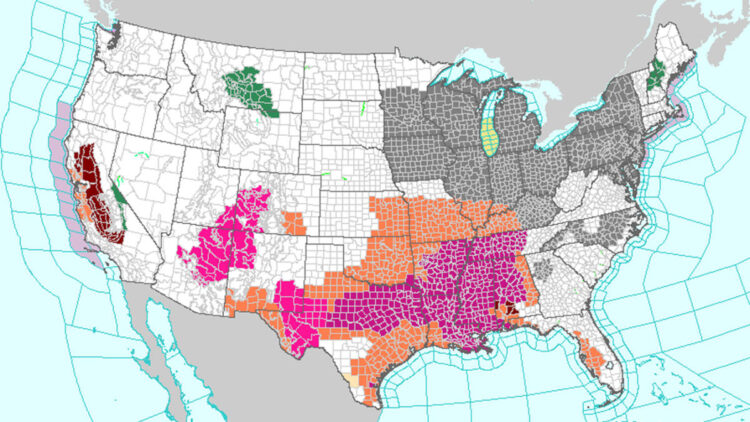Record-breaking summer temperatures are once again expected across the Southern United States as a heat dome continues to subject millions of Americans to scorching conditions.
On Wednesday, temperatures in Texas were expected to be hotter than 99% of the planet, New Zealand meteorologist Ben Noll tweeted.
More than 100 daily temperature records have fallen over the last two weeks in Texas alone.
In Dallas, the forecast high for Wednesday was 115 degrees Fahrenheit. In all, 45 million people live in places that were under heat alerts Wednesday, and those conditions are expected to persist, at least in Texas, through the weekend.
For Wednesday and Thursday, the National Weather Service has issued excessive heat warnings for Mississippi and Louisiana, where dangerously hot conditions with heat index readings of 115-120°F are possible. Heat index readings of 105-112°F are expected in portions of Alabama.
What is a heat dome?
A heat dome is defined as a “persistent region of high pressure that traps heat over an area,” William Gallus, professor of atmospheric science at Iowa State University, wrote in the Conversation.
It is often influenced by swings in the jet stream pattern — the band of mostly westerly winds that circles the globe — that can slow the movement of weather systems, resulting in heat dome events that can linger for multiple days.
Deaths due to the heat
Since triple-digit temperatures moved into Texas two weeks ago, 13 people have died as a result of the excessive heat, the Associated Press reported, and another died in Louisiana. One of those was a 14-year-old Florida boy who fell ill and lost consciousness while hiking in Big Bend National Park in Texas, where temperatures hit 119°F on Friday.
Hundreds of people in Texas have also visited emergency rooms since the start of the current heat wave to be treated for heat-related illnesses, the Guardian reported.
In the 2021 heat dome that descended on the Pacific Northwest, an area not accustomed to extreme heat, hundreds of people were killed due to excessive temperatures.
A new (and worsening) normal, thanks to climate change
Due to the tilt of the Earth, heat waves have always been a feature of summer in the Northern Hemisphere. But as global temperatures have warmed by 1.8 degrees Celsius on average since the start of the Industrial Revolution, numerous studies have shown that those heat events have become more common and are lasting longer.
“Climate change is amplifying this and other heat events, as global average temperatures are already about two degrees F (one degree C) higher than in preindustrial times,” according to Scientific American magazine. “With the planet still warming as humans continue to burn fossil fuels that release heat-trapping greenhouse gases, heat waves will continue to happen more often, last longer and reach higher temperatures, in part because of more extreme heat waves, an unusually hot summer in the past is now considered average.”
An analysis by Climate Central, a consortium of scientists and journalists, found that the current heat dome over Mexico and the Southern United States was five times more likely to have occurred thanks to climate change.
[ad_2]
Source link







